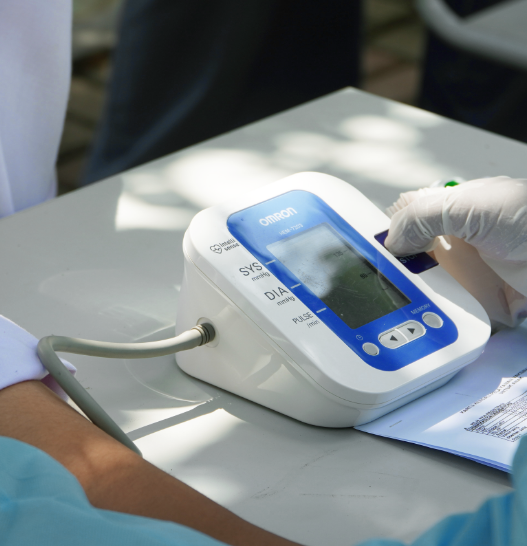The continuous monitoring of medical devices after their market launch plays a crucial role in the safety and satisfaction of patients and users. In a highly regulated environment such as medical technology, post-market surveillance (PMS) is not only a regulatory requirement but also a dynamic process that forms the basis for continuous improvement and maintenance of safety.
Effective post-market surveillance offers you several advantages as the person responsible for the product.
Enjoy reading!
A few basics to start with
The PMS, a crucial tool in medical device development, offers a wealth of insights. It provides valuable feedback and data on usage patterns, effectiveness, and safety-related incidents, allowing manufacturers to identify potential weaknesses, make targeted adjustments, and ensure or even enhance product safety in the long term.
Effective incorporation of the information received into product development is only possible through a structured feedback loop. The crucial role of interdisciplinary collaboration between different company departments, such as risk management, quality assurance, research and development, and regulatory affairs, powers this loop.
In addition, transparent communication about monitoring measures carried out and resulting product improvements helps to build customer confidence. In a market in which customer ratings play an increasingly important role, an exemplary PMS is not only part of meeting regulatory requirements but also a promise of quality to users.
Compliance with legal requirements, particularly in the context of the MDR and IVDR, is not just important- it’s essential. It necessitates close cooperation between different departments within a company. Violations of the PMS requirements can have severe consequences, underscoring the need for rigorous application to obtain market approval.
Effects of effective monitoring
Post-market surveillance is crucial in maintaining and enhancing product safety in the medical device sector. It is a powerful tool that helps to mitigate risks to patients and users by providing timely feedback and data on actual product performance. This monitoring is not just a regulatory requirement but a dynamic process that underpins continuous improvement.
The insights gained from post-market surveillance are instrumental in making targeted product adjustments, significantly increasing patient safety and satisfaction. Moreover, a robust PMS bolsters consumer confidence, which can be a game-changer for companies operating in a tightly regulated sector like medical technology.
Product optimization and quality assurance
Post-market surveillance plays a significant role in the continuous improvement of medical devices and the assurance of user safety. It is imperative that manufacturers systematically evaluate relevant feedback to enhance their products.
The PMS collects product-related data, providing information on usage patterns, efficacy, and safety-related incidents. By carefully analyzing this data, manufacturers can identify and address potential vulnerabilities, increasing product security in the long term. This proactive approach ensures compliance with legal requirements and highlights potential improvement areas that can help increase user satisfaction.
A structured feedback process is not just necessary; it’s crucial. It allows manufacturers to incorporate received information into product development and refinement. The interdisciplinary cooperation between risk management, quality assurance, research and development, and regulatory affairs ensures that all relevant findings are considered and result in appropriate measures.
Risk minimization is not a passive process but an active pursuit within the framework of post-market surveillance. By collecting and analyzing feedback from patients and healthcare professionals, companies can actively reduce the risks associated with using their products. This continuous adaptation and optimization forms the foundation for robust product quality, reflecting the company’s commitment to user safety and strengthening long-term trust in the brand and the company’s competitiveness.
Building trust with customers
The continuous monitoring and improvement of medical devices after their market launch is a decisive factor in building trust with customers.
An open error culture and the willingness to learn from feedback are essential. They signal reliability and customer orientation.
Documenting and communicating post-market surveillance measures and results to customers and patients demonstrates that their safety and satisfaction are paramount. This includes communication of best practices and compliance with regulatory requirements and demonstrates a commitment to quality standards and ethical behavior.
At a time when customer reviews and testimonials play a key role in the purchasing decision process, an exemplary post market surveillance system is essential. It serves not only to fulfill regulatory requirements, but also as a promise of quality to users and patients. It shows that a company thinks beyond the mere supply of products and assumes responsibility for the well-being of users and patients in the long term.
Compliance with legal requirements
Compliance with legal requirements is not just a part but the cornerstone of Post-Market Surveillance (PMS). Every company is responsible for ensuring that all requirements are meticulously followed.
In Europe, the MDR and IVDR are not just legal frameworks but precise guides that define the requirements for PMS. They oblige manufacturers to continuously, proactively and systematically collect and evaluate data about their products on the market.
Moreover, the regulation recommends and necessitates the implementation of a risk-based approach to post-market surveillance. This underscores the importance of not only reactive measures but also proactive strategies to minimize risks.
A proper PMS requires close cooperation between different company departments. Risk management, regulatory affairs, and product safety are particularly important here to meet regulatory requirements.
Violations of PMS regulations can have serious consequences, ranging from fines to the withdrawal of products from the market. Rigorous application is, therefore, essential for obtaining market approval.
Conclusion
Overall, effective post-market surveillance is invaluable for the medical device industry. It not only contributes to user and patient safety and satisfaction but also strengthens brand trust and improves companies’ long-term competitiveness.
To learn more about post-market surveillance, look at our article “Post-market surveillance for safe medical devices.”
Do you need support with implementation? Then please get in touch with us using our contact form.



